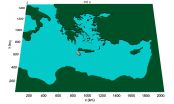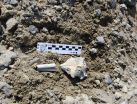(Press-News.org) Use of the 21-gene recurrence test score was associated with lower chemotherapy use in high-risk patients and greater use of chemotherapy in low-risk patients compared with not using the test among a large group of Medicare beneficiaries, according to an article published online by JAMA Oncology.
National Comprehensive Cancer Network (NCCN) guidelines recommend considering chemotherapy in estrogen receptor (ER)-positive, node-negative breast cancer for all but the smallest tumors. Several studies have suggested the 21-gene recurrence score assay (testing) is cost-effective possibly by prompting more appropriate allocation of chemotherapy to patients most likely to benefit.
Michaela A. Dinan, Ph.D., of the Duke Clinical Research Institute, Durham, N.C., and coauthors investigated the association between adoption of the 21-gene recurrence score assay testing in a nationally representative sample of Medicare patients with early stage breast cancer and the use of chemotherapy.
The study included 44,044 patients with low-risk (24 percent), intermediate-risk (51.3 percent) or high-risk disease (24.6 percent lymph node positive) as defined by NCCN guidelines. Overall, 14.3 percent of patients received chemotherapy within 12 months after diagnosis. The authors observed no overall association between receipt of the testing and chemotherapy use.
However, there was an interaction between NCCN risk and use of the assay. The genetic testing appeared to be associated with decreased chemotherapy in high-risk patients and increased chemotherapy use in low-risk patients. In a subgroup analysis of patients between the ages of 66 to 70, there was an overall decrease in chemotherapy from 29 percent to 24 percent that appeared limited to patients with high-risk disease and patients who underwent genetic testing. The authors note they could not determine to what extent decreased chemotherapy use reflects the influence of genetic testing or unrelated changes in practice.
The authors note their study has limitations, including that only testing paid for by Medicare could be detected in the analysis.
"Our data suggest that use of the RS [21-gene recurrence score] assay may have decreased chemotherapy use in general practice among younger patients with high-risk disease in whom receipt of chemotherapy would have otherwise been likely but that it was associated with greater chemotherapy use in patients with low-risk disease," the study concludes.
(JAMA Oncol. Published online August 27, 2015. doi:10.1001/jamaoncol.2015.2722. Available pre-embargo to the media at http://media.jamanetwork.com.)
Editor's Note: This works was supported by a grant from the Agency for Healthcare Research and Quality. Please see the article for additional information, including other authors, author contributions and affiliations, financial disclosures, funding and support, etc.
Commentary: Precision Medicine in Breast Cancer Care
In a related commentary, Allison W. Kurian, M.D., M.Sc., of Stanford University School of Medicine, California, and Christopher R. Friese, Ph.D., R.N., University of Michigan School of Nursing, Ann Arbor, write: "As tumor and germline assays expand from 21 genes to the whole genome, there is growing need for a framework to evaluate the contribution of precision medicine to cancer treatment quality. Research initiatives that integrate the breadth of cancer registries with the depth of physician and patient survey data can offer a window into the clinical encounter, along with an outward view of impact across the population."
(JAMA Oncol. Published online August 27, 2015. doi:10.1001/jamaoncol.2015.2719. Available pre-embargo to the media at http://media.jamanetwork.com.)
Editor's Note: The authors received funding from a National Cancer Institute grant to the University of Michigan. Please see the article for additional information, including other authors, author contributions and affiliations, financial disclosures, funding and support, etc.
INFORMATION:
Media Advisory: To contact corresponding author Michaela A. Dinan, Ph.D., call Sarah Avery at 919-660-1306 or email sarah.avery@duke.edu. To contact corresponding commentary author Allison W. Kurian, M.D., M.Sc., call Krista Conger at 650-725-5371 or email kristac@stanford.edu. END
Microfocused ultrasound (MFU) treatment to tighten and lift skin on the face and neck appeared to be safe for patients with darker skin types in a small study that resulted in only a few temporary adverse effects, according to a report published online by JAMA Facial Plastic Surgery.
Normal aging results in changes in the skin and underlying connective tissue. A system that uses MFU together with ultrasound visualization was developed to treat lax, aging skin. Previous clinical trials have shown the system to be a safe and effective noninvasive aesthetic treatment, according ...
PITTSBURGH, Aug. 27, 2015 - Researchers have identified in an animal model the molecular mechanisms behind resilience to noise-induced tinnitus and a possible drug therapy that could reduce susceptibility to this chronic and sometimes debilitating condition. The findings by a team from the University of Pittsburgh School of Medicine were published online in the journal eLife.
Tinnitus is typically induced by exposure to loud noise and causes whistling, clicking, roaring and other phantom sounds. It is estimated that 5 to 15 percent of Americans suffer from tinnitus, said ...
Each spring, powerful dust storms in the deserts of Mongolia and northern China send thick clouds of particles into the atmosphere. Eastward winds sweep these particles as far as the Pacific, where dust ultimately settles in the open ocean. This desert dust contains, among other minerals, iron -- an essential nutrient for hundreds of species of phytoplankton that make up the ocean's food base.
Now scientists at MIT, Columbia University, and Florida State University have determined that once iron is deposited in the ocean, it has a very short residence time, spending ...
Women lag behind men in the lucrative computer science and technology industries, and one of the possible contributors to this disparity is that they're less likely to enroll in introductory computer science courses.
A new study of 270 high school students shows that three times as many girls were interested in enrolling in a computer science class if the classroom was redesigned to be less "geeky" and more inviting.
The results, by University of Washington researchers, reveal a practical way for teachers to help narrow the gender gap in computer science by helping ...
About 10 percent of mothers experienced chronic, persistent depressive symptoms two years after Hurricane Katrina slammed into the Gulf Coast, killing more than 1,800 people, displacing hundreds of thousands and causing widespread damage estimated at more than $100 billion, according to a Georgia State University study.
While most people don't develop persistent depression after a major disaster like that, a small but significant number will, according to a study led by Dr. Betty S. Lai, assistant professor of epidemiology and biostatistics at the School of Public Health ...
A team of European researchers have developed a model to simulate the impact of tsunamis generated by earthquakes and applied it to the Eastern Mediterranean. The results show how tsunami waves could hit and inundate coastal areas in southern Italy and Greece. The study is published today (27 August) in Ocean Science, an open access journal of the European Geosciences Union (EGU).
Though not as frequent as in the Pacific and Indian oceans, tsunamis also occur in the Mediterranean, mainly due to earthquakes generated when the African plate slides underneath the Eurasian ...
For over a century, nitroglycerin has been used medically - particularly in the treatment of angina, or chest pain. It is a safe, cheap and effective treatment. Now, according to the latest study in ecancermedicalscience, researchers find that nitroglycerin is the latest in a series of medicines that could be repurposed to treat cancer.
The Repurposing Drugs in Oncology (ReDO) project, an international collaboration between the Anticancer Fund, Belgium, and US based GlobalCures, finds that existing and widely-used non-cancer drugs may represent a relatively untapped source ...
Physicists at the University of Basel succeed in synthesizing boron-doped graphene nanoribbons and characterizing their structural, electronic and chemical properties. The modified material could potentially be used as a sensor for the ecologically damaging nitrogen oxides, scientists report in the latest issue of Nature Communications.
Graphene is one of the most promising materials for improving electronic devices. The two-dimensional carbon sheet exhibits high electron mobility and accordingly has excellent conductivity. Other than usual semiconductors, the material ...
When they're not being the stars of various animated movies, penguins are playing an important role in evolutionary studies. Penguins are unique among modern birds in that they 'fly' through the water. Although flightless in air, penguins have a number of adaptations which allow them glide effortlessly through the water. And some of these adaptations are in an unlikely part of their anatomy - their brains. Recent finds of fossil penguins from 35 million year old sediments in Antarctica have begun to shed light on the changes in penguin brains that accompanied their ...
More than a cause of a simple infection, viruses are often involved in the development of serious diseases. Such is the case with liver cancer, which often develops in an organ that has been weakened by hepatitis B or C virus. Researchers at Inserm, the Paris Public Hospitals (AP-HP), Paris Descartes University, Paris 13 University (USPC), and Paris Diderot University have just identified the role of a new virus, hitherto unsuspected, in the occurrence of a rare type of liver cancer.
This study, based on follow-up and observation of 193 patients, is published in the 24 ...

